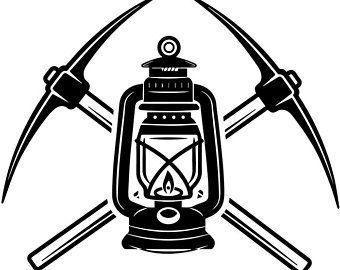Coal Hard Facts
Formation of Coal
Coal is a non-renewable energy source because it takes millions of years to form. What is in the ground now is all there is and we can’t realistically make more. There are an estimated 1.1 trillion tonnes of proven coal reserves worldwide. This means there is enough coal to last us about 110 years at our current rate of energy consumption.
The energy in coal comes from the energy stored in giant plants that lived hundreds of millions of years ago in swamp forests.
Since coal comes from plants, and plants get their energy from the sun, the energy in coal also comes from the sun. This process began about 345 million years ago.
When these giant plants and ferns died, they formed layers at the bottom of the swamps. Water and dirt began to build up on the top of the dead plant remains. This plant debris was submerged and buried by sediments.
Over millions of years pressure and heat would build up on top of the plant remains, undergoing chemical and physical changes and pushing out the oxygen, turning these remains into coal. Carbonization takes place under incredible heat and pressure. About 3 meters (10 feet) of layered vegetation eventually compresses into a third of a meter (1 foot) of coal.
Coal is very different from mineral rocks, which are made of inorganic material. Coal is made of fragile plant matter, and undergoes many changes before it becomes the familiar black and shiny substance burned as fuel.
Coal exists in underground formations called "coal seams" or "coal beds". A coal seam can be as thick as 30 meters (90 feet) and stretch 1 500 kilometers (920 miles).
Coal Classifications
Anthracite Coal. Often referred to as “hard” coal, is a hard, compact coal with a submetallic luster. It has the highest carbon content, the fewest impurities, and the highest energy density of all types of coal. It is the top-grade ranking of coals.
Carbon content: 92% - 98%. Ash content: 5%. Very little smoke and the least amount of ash.
Bituminous Coal. Often referred to as “black” coal is a relatively soft coal containing a tarlike substance called bitumen asphalt. It is the class of coal below anthracite coal; and has various “grades” within this classification. Bituminous coal is 100 to 300 million years old. It is a sedimentary rock and contains "bands" of different consistency that mark the layers of plant material that were compressed.
Carbon content: 60% - 80%. Ash content: 12%. Color: Black or dark brown. Burns with a bright smoky flame.
Bituminous Coal was the coal mined in Cape Breton Island. It was our most abundant fuel. Cape Bretoners depended on this fuel source for warmth, cooking and domestic chores within the home. Bituminous coal was also used in our steel industry as a source of heat energy, especially in the time frame before and during WW II.
Bootleg Coal: This was the most common type of coal used by many Cape Bretoners. [not the miners] A bootleg coal pit was as common as the family vegetable garden! Oil and electricity were not options for home heat, and wood was scarce in most areas. Anywhere there was a coal seam outcropping [close to the surface], a “family bootleg coal pit" was dug.
Organized bootleggers delivered coal to homes - dodging the Dominion Coal Company!
Cape Breton Coal Mining



